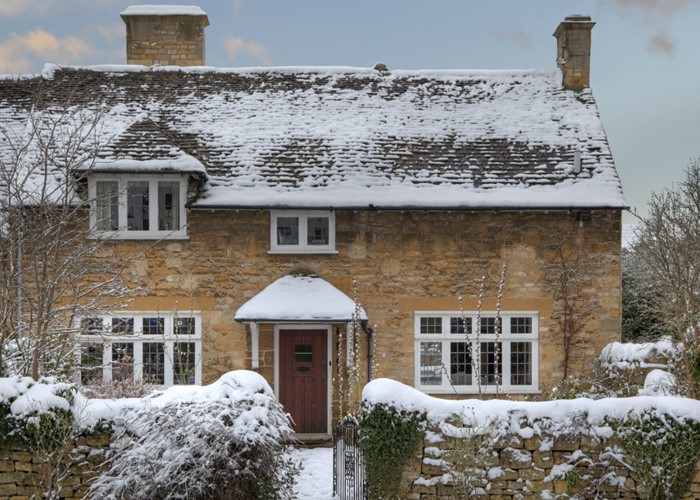Why tracker mortgages deals aren't as cheap as you think

Tracker mortgages might seem like a good idea today, but they could become a whole lot more expensive tomorrow.
Should you go for a fixed rate or a tracker mortgage? The debate has raged on for as long as I can remember. After all, as the outlook for interest rates change, popularity tends to swing from one to the other.
Why are trackers still attractive?
Of course, interest rates are ultra low right now. The Bank of England base rate (BBR) recently hit its lowest ever level of 1%. This means many borrowers with trackers are enjoying much lower repayments as the rates on their home loans have dropped off steadily over the last few months. And it looks like low rates could stick around for some time to come.
Current tracker deals are still looking pretty good. It’s possible to find loans with mortgage rates well below 4%. As you can see from the table below, Alliance & Leicester offer a two-year tracker at just 3.04% (for borrowers with a deposit or equity stake in their home of 40%). That’s a margin of 2.04% above the current base rate.
Today’s tracker rates measure up reasonably well against fixed rate deals too. The most competitive two-year fix is 2.99% from HSBC which is just a shade cheaper than Alliance & Leicester’s best offer. So, it’s easy to see why borrowers might still be tempted by trackers given that more base rate cuts are on the cards.
Some tracker deals that were taken out a year or so ago are now proving to be exceptionally cheap. Take Cheltenham & Gloucester for example: In July 2007, the lender launched a new tracker with a margin of 1.01% below the base rate. So, with a 1% base rate today, this means thousands of C&G borrowers are now enjoying interest-free mortgages!
Other large lenders have also offered trackers in the past at tiny margins above the base rate, which means their borrowers are benefitting from near interest-free loans too.
But, what’s the problem?
That said because the base rate is already at 1%, there’s not much room left for manoeuvre. Yes, the base rate could be cut back to zero in the coming months. But once that has happened, tracker borrowers won’t benefit from any further rate cuts. (In fact, some have already missed out on cheaper repayments because their tracker deal has reached the collar on the rate. Find out more about collars work here.)
After this, the only way is up which could spell trouble. Sooner or later the economy will begin to recover and the base rate will start to climb again. Of course, there’s no way of knowing with any great certainty when that might happen, but it’s a risk borrowers who choose trackers will have to take.
The margin
The rates on current trackers deal might look competitive when you compare them with fixed rates, but the margin above the base rate has become a lot bigger than it was back in 2007. And you won’t be able to find any deals left which offer a margin below the base rate or which match it.
The following table shows the lowest and highest tracker rate deals available from a selection of large lenders: (There are plenty of other rates available in between those shown too.)
| Lender | Pay rates (margin) | Term | % loan-to-value | Product fees |
|---|---|---|---|---|
| Alliance & Leicester | 3.04% (BBR + 2.04%)
3.54% (BBR + 2.54%) |
2 years
2 years |
60%
60% |
£2,400
£1,200 |
| Abbey | 3.59% (BBR + 2.59%)
3.84% (BBR + 2.84%) |
3 years
2 years |
60%
75% |
£1,495
£1,495 |
| Halifax | 3.74% (BBR + 2.74%)
4.84% (BBR + 3.84%) |
2 years
Lifetime tracker |
60%
75% |
£995
£1,499 |
| HSBC | 2.95% (BBR + 1.95%)
3.89% (BBR + 2.89%) |
Lifetime tracker
Lifetime tracker |
60%
75% |
£799
Nil |
| Lloyds TSB/C&G | 3.69% (BBR + 2.69%)
4.59% (BBR + 3.59%) |
To 30.06.12
To 30.06.12 |
60%
75% |
£994
£99 |
| Nationwide | 3.98% (BBR + 2.98%)
4.28% (BBR + 3.28%) |
3 years
2 years |
60%
75% |
£995
£995 |
| Woolwich | 3.29% (BBR + 2.29%)
3.49% (BBR + 2.49%) |
Lifetime tracker
Lifetime tracker |
60%
60% |
£995
£995 |
Source: Moneyfacts.co.uk and lenders’ websites. BBR = bank base rate. Margin = the difference between the pay rate and the base rate. Loan-to-value = the mortgage loan as a percentage of the value of the property.
Today's rates are a far cry from the deals of 2007 with margins above the base rate between 1.95% and 3.84%. Remember that C&G once offered a tracker deal at BBR - 1.01%. But now, as you can see, the lender’s latest deals offer rates between BBR + 2.69% and BBR + 3.59% (giving current rates of 3.69% and 4.59% respectively). These mortgage rates might seem quite cheap, but that’s only true while the base rate remains low.
Imagine you went for Halifax’s lifetime tracker at BBR + 3.84%. Today your mortgage rate would be 4.84%, but if the base rate rose back up to say, 5% during the term of the loan, your mortgage rate would climb up to a whopping 8.84%. Thankfully, Halifax doesn’t deduct any early repayment charges if you decide to remortgage with a new lender later on.
So, before you make your final decision, you'll have to ask yourself whether a tracker that's affordable now is likely to stay that way in the future.
In this way, the choice isn't as clear cut as you might hope. After all, if you think the base rate is likely to stay low for the foreseeable future, a short-term tracker deal could work out well for you. As could a lifetime tracker with no penalties if interest rates start rising again and you need to get out.
Of course, if you want the certainty of fixed rate, then your decision is easier. But whichever your preference, you can get advice on the best deal to choose from our mortgage service.
Compare mortgage deals here.
More: Is It Time To Go For A Fixed Rate? | The Best Strategy For Remortgaging
Most Recent
Comments
-
Staintunerider, I think you've misunderstood the point. What I said was that in actual fact banks have continued - and in fact increased - their lending on their own books. The problem has been the disappearance of the so-called "shadow banking" system consisting of hedge funds, private equity firms, investment companies and investment banks. The figures quoted were that in 2007 $668bn of mortgages were securitised and laid off by traditional banks into the shadow banking system. Last year the total was $40bn - and 2009 is looking worse. Simply put, no government or bank is able to replace $628bn of lending, however many banks are nationalised or coerced into it.
REPORT This comment has been reported. -
The base rate will get lower - and sooner than you think. It will hit 0%. A whole new ball game is coming and the banks and government are simply playing the waiting game. Beware - A sting is in the tail. Lower rates to entice you. Then once they have you the rates will go up to 12% + within 2 years. Debating on which is the best mortgage type is pointless as they each hold too many stipulations and criteria that will always benefit the lender! The age old sales patter and enticement from the banks is never more in evidence than when times are hard. Beware! Regardless of the 'deal'and 'enticement', you should only be borrowing if you can comfortably afford too AND can have a life at the same time.
REPORT This comment has been reported. -
One other point to make here is that while people sit back and enjoy their tracker rates, we are all losing around £500 a week off the value of our homes thus increasing the LTV. A friend of mine landed the hsbc .99% above B of E tracker at 74% LTV back in september. He is now paying 1.99% on a £167,000 mortgage which is a huge saving on his previous 5.69% fixed rate. However, his LTV now stands at 98% and in realistic market terms he could well be looking at negative equity. This is fine as he can pay the mortgage and has no intentions of moving for at least 5-6years. The problem is and this is where is bum is nipping up a little, hsbc will not remortgage him onto a new deal ie. fixed rate due to his LTV. I am sure that no other lender will remortgage him at the moment either so when rates go up he will not be able to simply find a fixed rate deal as were his intentions. Rates may well stay low for 2009 then start creeping up during 2010 at some point but at the same time house prices will probably continue to fall for the best part of this year and so the story goes on. I will imagine there are tens of thousands of people caught in this situation now, its going to be a grim year
REPORT This comment has been reported.
Do you want to comment on this article? You need to be signed in for this feature









19 February 2009